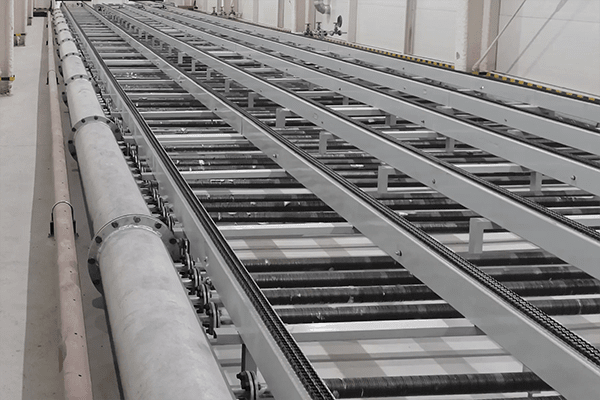The Inner Workings of an Automatic EPS Conveyor
An automatic EPS (Expanded Polystyrene) conveyor is a specialized piece of equipment designed to efficiently transport and process EPS foam products. These conveyors are widely used in industries such as packaging, construction, and manufacturing. In this article, we will explore the key components and mechanisms that make these conveyors function smoothly.
Basic Components of an EPS Conveyor
- Conveyor Belt: The heart of the conveyor is the belt, which is typically made of a durable material such as rubber or plastic. It is supported by rollers that allow it to move continuously.
- Drive System: The conveyor belt is driven by a motor and gear reduction unit, which provide the necessary power to move the belt forward.
- EPS Feeders: These devices are responsible for feeding the EPS foam onto the conveyor belt. They can be manual or automatic, depending on the specific application.
- Sorting and Processing Equipment: Depending on the needs of the production process, the conveyor may be equipped with various sorting and processing equipment, such as cutters, trimmers, or stacking machines.
- Control System: An automated conveyor system is controlled by a computer or programmable logic controller (PLC). This system monitors the conveyor’s operation, regulates its speed, and coordinates with other equipment in the production line.
How Does an EPS Conveyor Work?
- EPS Feeding: The EPS foam is fed onto the conveyor belt by either a manual or automatic feeder. The foam can be loose or in the form of blocks or sheets.
- Conveyor Belt Movement: The conveyor belt then transports the EPS foam along its path. The speed of the belt can be adjusted to match the production rate.
- Sorting and Processing: As the EPS foam moves along the conveyor, it may pass through various sorting and processing equipment. For example, a cutter can be used to cut the foam into specific shapes or sizes, while a trimmer can be used to remove excess material.
- Stacking or Packaging: The processed EPS foam is then stacked or packaged for further use or shipment. Some conveyors may be equipped with automatic stacking machines that can stack the foam into specific configurations.
- Control System Monitoring: Throughout the entire process, the control system monitors the conveyor’s operation and ensures that it is functioning correctly. It can also detect any problems or malfunctions and take corrective action.
Benefits of Using an Automatic EPS Conveyor
- Increased Efficiency: Automatic conveyors can significantly improve production efficiency by automating the transportation and processing of EPS foam.
- Improved Quality: By controlling the speed and movement of the conveyor, it is possible to maintain a consistent quality of the processed EPS foam.
- Reduced Labor Costs: Automated conveyors can reduce the need for manual labor, leading to lower labor costs.
- Flexibility: Many EPS conveyors are modular and can be easily customized to meet the specific needs of different production processes.
- Safety: By automating the handling of EPS foam, conveyors can help to improve safety in the workplace.
In conclusion, automatic EPS conveyors are essential pieces of equipment in industries that rely on EPS foam. These conveyors offer numerous benefits, including increased efficiency, improved quality, reduced labor costs, and enhanced safety. By understanding the key components and mechanisms of these conveyors, it is possible to appreciate their value in modern manufacturing processes.
Post time: 09-29-2024






